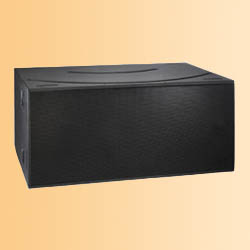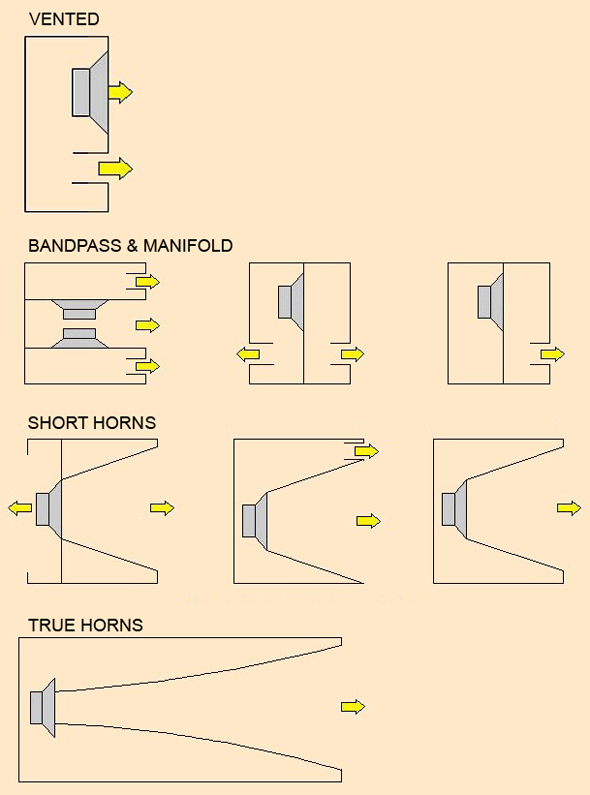
How typical is this example? Are badly tuned woofers like this really out there? Yes. A surprisingly large number of products exhibit this problem. It’s one of the most common causes of bad bass with vented-box systems.
This sort of mistuning isn’t the only power bandwidth defect we see. In general, many concert woofers operating at high power exhibit one or more of the following problems:
—Blurry sound and/or chuffing noise from air turbulence in cabinet ports.
—Severe output limiting in the extreme low frequencies, due to energy losses (“port compression”) in cabinet ports.
—General compression (thermal compression) and lack of impact at high levels, due to excessive voice coil heating.
—Nasty droning or honking sounds emanating from cabinet ports.
—Rough, distorted tone quality.
—And more.
Kinds of Woofers
In the audio world, there are many woofer box styles, but only about four of them are usable for concert touring. These are:
Manifold Enclosures
Although capable of high output, these have so many artifacts that it may be impossible to get them sounding right.
Short Horns
While often rough-sounding for subs, these can be very musical when used for upper bass, above 80 Hz – as Jasonaudio did very successfully a long time ago (in a galaxy far, far away, etc.) .
Vented Boxes
These can work well quite well with the high-power, high-linearity transducers available now, as long as port turbulence is looked after – which it isn’t in many designs. In fact, port turbulence is a big issue, even with medium-power designs. To avoid turbulence, a port should be round or square (not a narrow slot or a triangle), should have a large cross-sectional area, and should have gently rounded corners at both entry (i.e. inside the box) and exit (outside the box). A single large port is better than two smaller ports. The idea is to keep port air velocity down (hence the large area) and minimize the moving air’s contact with sharp corners and other shapes that would cause irregular air movement.
Unfortunately, shapes such as these aren’t easy to accommodate in typical subwoofer box designs, where almost the entire frontal area is usually taken up by speaker cones. You’d think that putting the port on the rear of the box might be a solution, but rear ports don’t work very well in sound reinforcement applications, particularly for large arrays.
Large ports require long ducts to get the box tuned to the right frequency. Longer ducts take up more interior space, too, so the box has to have a larger cubic volume. What’s more, long ducts tend to act like organ pipes, and exhibit resonances in the 400 Hz to 1 kHz range. Such resonances are excited by nearby speakers and by distortion harmonics from the subwoofer transducers themselves. When they occur, they tend to give a blurry, unmusical, and sometimes wooly quality to the lower midrange – and there’s no way to equalize them out.
Bandpass Enclosures
Some very powerful and musical double-chamber bandpass designs (ported chambers both behind and in front of the transducer) have been fielded in recent years. Some very bad ones – boomboxes – have been offered as well.
Box rigidity is a huge issue with today’s high-power designs. Wall thickness, wall material, and internal bracing are all critical issues for best sound. It’s not as easy as it looks.
Jeff Berryman served as the director of Jasonaudio, a touring sound company based in Canada, and is a senior scientist with Electro-Voice.

